Cherry variety Vladimirskaya
Vladimirskaya is an old cherry variety widespread in Russia with medium ripening fruits.
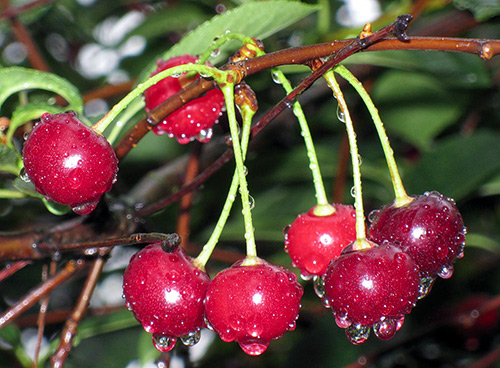
Given the long history of the development of the variety, it is difficult to reconstruct its exact origin. According to the generally accepted version, he was brought with him to the Vladimir province by wandering monks from southern countries (Greece, Kiev). The first seedlings were not particularly hardy, so the monks made great efforts to grow them. After the successful acclimatization of the variety, cherry orchards began to be planted not only on Vladimir lands, but also in neighboring provinces. This type of farming has earned particular popularity in the city of Vladimir itself, as well as in Yaropolch (present-day Vyazniki). In those days, it was customary to plant cherries on slopes and hills, here they endured cold winters best of all. When planting bushes on flat terrain, they definitely had to be buried in snow. An interesting fact: in the 19th century, Vladimir ranked first in the number of cherry orchards (and there were about 400 of them!). And to this day, Vladimirskaya cherry is one of the main symbols of this region. In Vladimir, in 2014, a monument was even erected to her.
For several years, the variety has been propagated using suckers and seeds. Therefore, at present, this culture has a wide variety of forms. In fact, Vladimirskaya cherry today acts as a collective concept of all existing clones and seedlings with their positive and negative signs and properties. You can often hear other names of the variety - Vyaznikovskaya, Gorbatovskaya, Dobroselskaya, Izbyletskaya, Poditeleva.
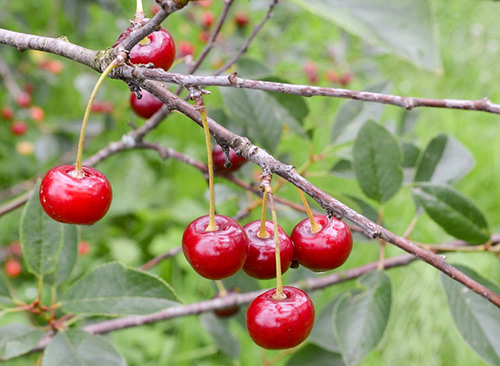
Since 1947, this variety has been zoned in the North-West, Central, Volgo-Vyatka, Central Black Earth and Middle Volga regions.
It is a typical multi-stemmed bush-type cherry with its own root system. The height of the bushes varies from 2.5 to 5.0 meters or more. In the grafted form, single-stamped trees are formed. The bark of the trunk and skeletal branches is ash-gray in color, with longitudinal cracks, flaky type. The crown is characterized by a rounded shape and weak foliage inside, with age it becomes spreading, weeping; the skeletal branches are ascending, when they leave the trunk, they form an angle of 50-60 degrees. Annual branches drooping, yellowish-brown in color, closer to the base covered with a silvery bloom. Vegetative buds are small in size, conical in shape, deviating from the shoot; generative buds are oval.
The leaves are medium-sized (8.3 × 3.9 cm), dark green, matte, elongated-oval or elongated-ovoid, with a slightly pointed base and a gradually sharpened apex, the edges of the leaves are double-serrate, serrated. The leaf blade is folded like a boat along the main vein, which is a characteristic feature of the leaves of this cherry. The length of the petioles is 1.2 cm, the thickness is medium, the color is significant anthocyanin pigmentation. The glands are small, dark red in color, usually located on the petiole at the base of the leaf in an amount of 1 - 3 pieces, less often on the base of the leaf. Inflorescences include 5 - 7 flowers of medium size (2.8 cm), saucer-shaped, with a wide-oval and slightly forked top. The petals are touching. The stigma of the pistil is at the same level with the anthers, the length of the column is 0.8 cm, the filaments of the stamens are 0.5 - 0.6 cm. The cup is cup-shaped, on the sunny side of the anthocyanin color. Pedicel with anthocyanin bloom, 1.8 - 2.3 cm in size.
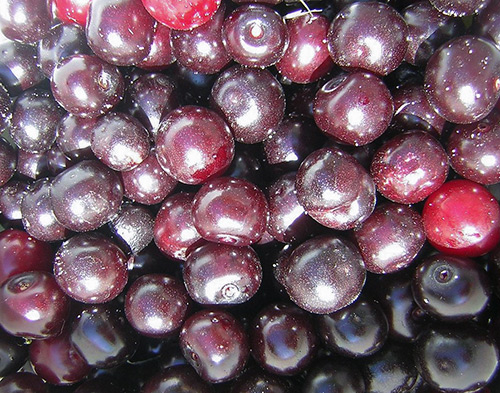
The variety is characterized by fruiting like bush cherries: more than 80% of the berries are tied on annual branches.
Vladimirskaya cherry fruits from small (12.1 × 13.7 × 12.5 mm) to medium size (16 × 20 × 17.5 mm), weighing from 2.5 to 3.4 grams, flat-round shape, slightly compressed with sides of the abdominal seam; the apex is round; the funnel is shallow, tight; the abdominal suture is poorly visible. The skin is black-red, covered with numerous gray dots.The pulp is dark red, dense structure, fibrous consistency, aromatic, very good harmonious sweet and sour taste (with a predominance of sourness). Thick juice, dark cherry color. The stone is small (weighing 0.3 g, measuring 10 × 8 × 7 mm), brown in color, broadly oval to ovoid in shape, easily separates from the pulp, occupies 8.3% of the total weight of the fruit. The stalk is thin, in length - from 2.9 to 4.5 cm, from fully ripe berries it is separated very easily, with a dry separation.
By chemical composition, fruits grown in northern latitudes (St. Petersburg) contain: dry matter (16.4%), the amount of sugars (10.9%), free acids (1.7%), ascorbic acid (26, 6 mg / 100 g fr wt). Berries grown in the Krasnodar Territory (Maykop) contain: dry matter (18.5%), the amount of sugars (11.46%), free acids (0.67%), ascorbic acid (4.6 mg / 100 g) ... The fruits are highly rated on the tasting scale due to their excellent taste. In terms of use, the variety is universal, suitable for the production of high-quality processed products (quick freezing, dried fruits, preserves, compotes).
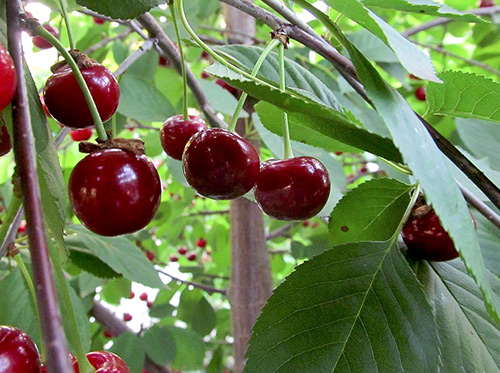
The cherry is mid-season. In the conditions of central Russia, fruits ripen in mid-July. Moreover, the variety is characterized by a non-simultaneous (extended) process of cherry ripening. Delays in harvesting can lead to shedding.
The early maturity is good: the grafted plants begin to bear fruit from 2 to 3 years after planting.
The winter hardiness of trees is generally assessed as good, however, at low temperatures in winter, significant damage to the generative buds is possible, which in turn leads to a decrease in yield. According to observations over a 10-year period, in the conditions of the Leningrad region, the level of freezing of generative buds reached an average of 1.1 points, and in some years ranged from 1 to 3 points. This circumstance prevents the spread of this cherry in the northern regions of central Russia.
The level of productivity of Vladimirskaya is significantly influenced by 2 factors: the area of growth and weather conditions during overwintering. In general, the productivity of the variety is characterized by moderate to good. In favorable years, in the conditions of central Russia, the bushes (at the time of full fruiting) each bear up to 20 - 25 kg of fruit, and in the northern latitudes (for example, in the Leningrad region), only no more than 5 kg can be collected from a 10-year-old plant.
The variety has an average flowering period (early May), the period from the beginning of flowering to the beginning of ripening is 60 days. The tree is self-fertile. Among the best pollinators of Vladimirskaya, varieties are distinguished: Amorel pink, Vasilievskaya, Griot Moscow, Lotovaya, Lyubskaya, Fertile Michurina, Rastunya, Pink bottle, Turgenevka, Black consumer goods, Pink shubinka.
Reproduction is possible by undergrowth.
Vladimirskaya cherry has gained wide popularity not only among private amateur gardeners. In central Russia, it is often used for extensive industrial plantings. This variety is of limited interest for the more northern regions, as well as for the southern zone of fruit growing.
The main advantage of the variety is recognized as high-quality fruits of universal use.
Among the significant disadvantages, there is a not very high level of frost resistance of generative buds. In addition, the variety is prone to fungal diseases (coccomycosis, moniliosis).
It is also worth noting that due to the wide variety of forms of this variety, selection of high-yielding clones with the best biological and economic indicators is required.



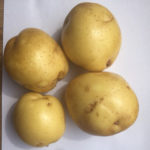
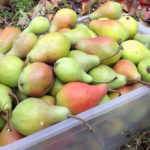
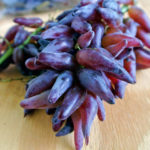



I have been growing this cherry on my site for more than 10 years. During the period of use, there were practically no complaints about it. The most fertile among all the bushes are those planted in a mixture of black soil and sand. It winters well in frosts down to minus 20 ° C, without visible damage to the shoots. It also tolerates spring frosts during flowering and fruit set. It does not lose its properties when growing seedlings from seeds. Fruits with a pronounced aroma and pleasant sourness, are well transported, retain their external and taste qualities for 3 - 5 days after harvest.
I live in the Ivanovo region, which borders on the Vladimir region, and I think that is why this variety is quite common here. Although, as the indigenous old-timers told me, there have been winters here, when almost all cherry trees froze out (Ivanovo region is even north of Vladimir region). My cherry is eight years old. What can I say? I love the taste of it. The fruits are dark, large, juicy. But, unfortunately, it does not make me happy with large harvests, I never cooked jam from it, since I only have enough for food. Two years ago, frost-cracks appeared after winter, they had to be treated. And this summer, 2017, it did not bear fruit at all, because the spring and summer were too cold. I think this variety is more suitable for more southern regions.
I agree, Vladimirskaya is a very old variety. But I disagree with the fact that it is widespread. Our house was bought more than 40 years ago, and there was already cherry in the garden - one variety was the tastiest, the most abundant, in general, the most ... It was. And there is something to praise for - ripe cherries are very dark and appetizing, sweet, with a slight sourness, "fleshy". In the blanks - delight: compotes and jam of excellent color and taste, frozen - the berries do not spread and do not lose their taste. But this cherry turned out to be a big drawback - it reproduces with difficulty and reluctance, so they looked for seedlings in nurseries and gardeners to renew their old plantings - that's when they found out that our cherry is called Vladimirskaya, and it is almost impossible to find it ... I had to learn vaccinations ... A variety with very tasty berries, but it is old and highly susceptible to moniliosis, which is probably why it was widely replaced with new, more disease-resistant plants.
Two such cherries grow in the garden, already very large, maybe higher than the second floor. In order to bear fruit strongly, I will not say, it happens that I will collect several liters of cherries, and a good harvest is 10 liters. But lately, I planted a plum next to them and noticed that those sides that are closest to the plum are very dotted with cherries, moreover, there are much less barren flowers. I assumed that pollination with plums helps this cherry to set better, I did not feel a decrease in berries. As for the plum, I planted Alenka, large plums, although the tree will only be in its fourth year. Does not freeze even when it is less than minus 20 degrees in winter.